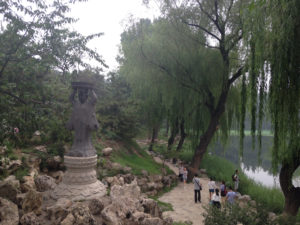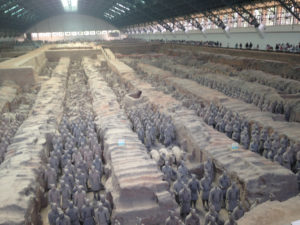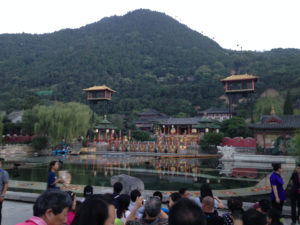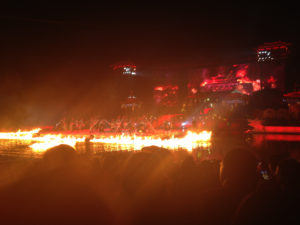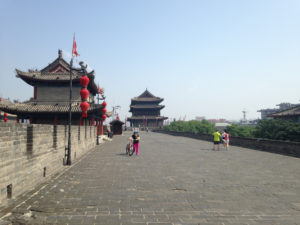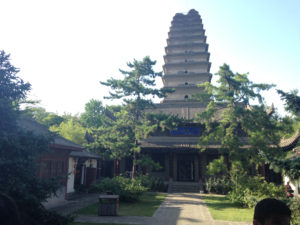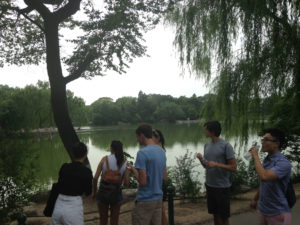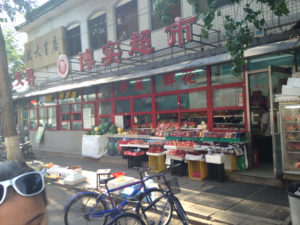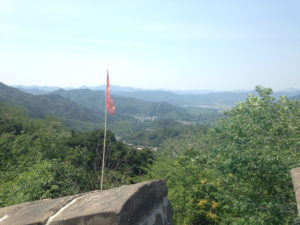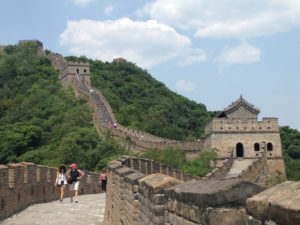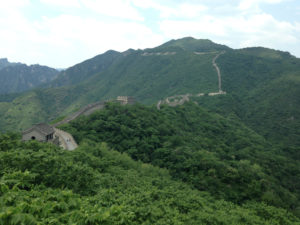Time continues to fly in the capital. I feel like there is so much I could write about that these posts might as well have not end. Every new day presents new opportunities, and you are only limited by how adventurous you are. Never seen, let alone heard of, that dish before? Try it for yourself. Wondering what’s off to the east of campus? Go for a walk and explore. In Chinese, there’s a saying: 入乡随俗, literally “enter village, follow customs”, which is essentially the Chinese equivalent of “When in Rome, do as the Romans do”. And in order to experience Chinese culture to the fullest, you have to be willing to leave your comfort zone. Instead of ordering beef dishes every meal because they are what you are most familiar with, try something new. There are so many foods here that don’t even have proper English names (they tend to just attach “Chinese” to the front, e.g. Chinese broccoli and Chinese yam). You never know when you’ll find something new you really like. For example, I have discovered that I really enjoy red bean, common in deserts, and a fruit called Chinese hawthorn.
This goes for exploring as well. On more than one occasion my classmates and I have gone to an area called “Wudaokou”. It is not far from campus and has tons of good restaurants, bars, and other attractions such as karaoke. Exploring the area we found a place to do some karaoke and a cool little bookstore with a bunch of children’s books, that are quite frankly at around our reading level. Similarly, to the south of campus is a large mall complex called “Zhongguancun Mall”, that I haven’t even completely explored yet, despite being there on multiple occasions. We found a pizza place there whose pizzas are not only larger than any I’ve ever seen before, but whose taste rivals, and even surpasses,that of many pizza places back in the states. On the Fourth of July, we went out to yet another area of Beijing, known for being home to many Americans, and celebrated with some very good barbecue sandwiches. What I’m trying to say is keep exploring and don’t settle, because you never know when you’ll find something you’ll really enjoy.
A week after the Great Wall expedition, we found ourselves headed towards the heart of Beijing: Tian’anmen Square and the Forbidden City. Tian’anmen Square is a massive city square south of the palace. There are many buildings of interests along its edges, including government buildings, the National Museum, and Mao Zedong’s final resting place. The large scale of the square prepares you for the grandeur of the Forbidden City, where it seems everything is larger than life. Multiple layers of towering gates, spacious courtyards, shrines, and countless buildings, all in traditional Chinese architecture. It was very crowded and incredible hot that day, but I was still rather awestruck by the place. I’ll attach some photos that will hopefully give an idea of what I’m talking about.
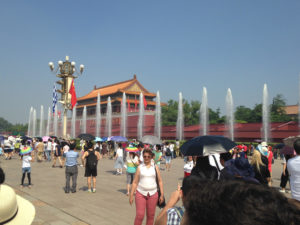


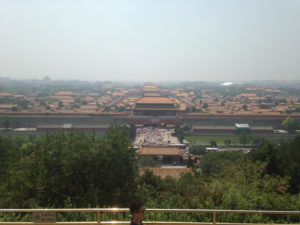
After exiting out the north gate, we walked through some of Beijing’s old neighborhoods, called “胡同” (hutongs). These areas are characterized by thin, winding alleys and lots of small shops. They definitely have a unique vibe. Afterward we went on to Houhai, a really nice area around a small lake, which contains shops, temples, bars, restaurants, etc.
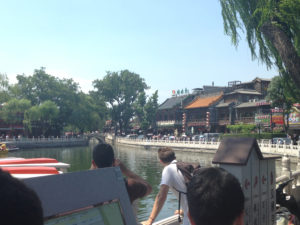
It’s especially nice after sunset when all the lights reflect off the water and live music abounds. The next morning we went to Beijing Zoo. The zoo is huge, we were there for at least of couple of hours and I don’t think we saw even half of the displays. If you’re a fan of zoos, it’s be a great place; most of us just got exhausted and left a little early.
That next Saturday we went to an area of Beijing simply known as “798” (qijiuba). This district is most famous for its artistic significance: the area of home to tons of art galleries of various kinds, from contemporary, traditional, and everything in between. Some of them were solely on display, some places were selling art. There were also a lot of small shops selling all sorts strange or unique things. Shirts, cloth, postcards, model trains and cars. An exhaustive list of the wares of these shops would simply be ridiculous. You could probably spent an entire day just exploring the shops of 798 and not see everything available.
The following day is probably one of my favorite days so far. That Sunday I woke up fairly early and took a long subway ride to “潘家园” (panjiayuan), also known as the ‘Dirt Market’, on the other side of Beijing. This is a huge open-air flea market that primarily sells more traditional Chinese objects. There are literally hundreds of vendors, selling jewelry, art, calligraphy, pottery and ceramics, books, and other assorted goods. It’s immense, and to be honest I liked it better than the Pearl Market. Vendors weren’t as obnoxious, and don’t call out to you as you pass by. Additionally, a lot of stuff sold there is more uniquely “Chinese”, and make good souvenirs (at least in my opinion). You still haggle, like at the other markets (unfortunately my bargaining skills are rather deplorable). This time around I didn’t buy much, mostly some ceramics, but I plan to go back some time.
Afterward, on the way back, I stopped at 北海公园, Beihai Park, a large public park not too far west of the Forbidden City. Like Houhai, Beihai surrounds a small lake. I personally loved this park. It was a beautiful day, if a little hot. Besides the wide roads the went around the lake, there were many smaller paths weaving around the trees that surround the lake. Every so often along these paths were pavilions of various sizes, places to find shade from the particularly relentless sun. Besides those seeking refuge from the heat, many pavilions also had musicians playing traditional Chinese instruments (admittedly I don’t know what any of them are called). After walking around the market all morning and standing on the subway, these pavilions were a nice reprieve. One particular pavilion caught my attention. It was a bit large, built over a small pond and surrounded by trees. It was far enough away from the city and the more crowded parts of the park that it was very peaceful. You could have painted the scene. The only noises were the birds and an older man playing some sort of flute instrument. Nearby a family was having a picnic, and occasionally people would pass by. I must of stayed there a half hour, just relaxing and enjoying the atmosphere.

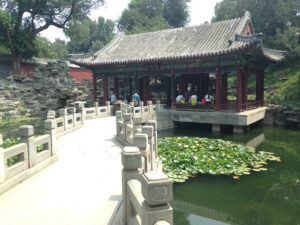

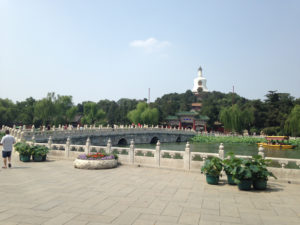
Finally I got up to explore the rest of the park, which now mostly consisted of the island in the lake. The island housed the “White Pagoda” and a Buddhist temple. It was a small island, but it hid a deceptively large number of old, traditional-style buildings. I tried to wander through as much of it as I could, but I’m sure there’s plenty that I missed. Afterward I finally returned to the dorms. And I think that is where I’ll leave off this entry. Until the next time!

